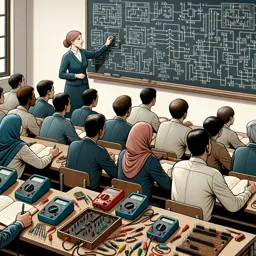Understanding Troubleshooting in Electronic Circuit Design
Electronic circuit design is a foundational skill for electricians and professionals working with modern technology. Designing a circuit, however, is only one step in the process—troubleshooting issues that arise after assembly is just as crucial. This article explores common problems faced in electronic circuit design and how to identify and resolve them effectively.
Most Frequent Circuit Issues
- Power Supply Issues: One of the most common problems is an unstable or incorrect power supply. Check if the voltage and current match the requirements of your circuit components.
- Improper Connections: Misplaced or loose wires and failing solder joints can cause intermittent issues, short circuits, or open circuits.
- Component Failures: Components such as resistors, capacitors, or ICs may be damaged during installation, or may not function as specified due to manufacturing faults.
- Incorrect Placement: Some components must be oriented a particular way, like polarized capacitors and diodes. Placing them backwards can stop your circuit from working or cause further damage.
- PCB Design Problems: Bad layout, switching noise, or insufficient spacing can all impact circuit performance.
Step-by-Step Troubleshooting Techniques
- Visual Inspection: Start by looking for obvious damage, loose wires, or cold solder joints on your circuit board.
- Testing Power: Using a multimeter, verify all power supply lines are within the expected voltage range.
- Signal Tracing: Use an oscilloscope or logic probe to check signal integrity throughout the circuit, looking for points where the signal is lost or altered.
- Component Testing: Test individual components out-of-circuit with a multimeter, especially if there are unexpected behaviors.
- Consult the Schematic: Ensure that the physical layout matches the schematic and that all connections are correct.
Tools for Effective Troubleshooting
- Digital Multimeter (DMM)
- Oscilloscope
- Signal Generator
- Soldering Iron and Desoldering Pump
- LCR Meter (for measuring inductance, capacitance, and resistance)
Preventing Future Circuit Issues
Incorporate testing and simulation early in the design phase using software tools such as SPICE-based circuit simulators. Always double-check component specifications and handle all parts with proper anti-static precautions.
Good documentation and labeling will also make the troubleshooting process much smoother for you or anyone else working on your circuits in the future.
Conclusion
Effective troubleshooting is an invaluable skill for any professional involved in electronic circuit design. By systematically approaching issues with the right techniques and tools, you can save time, reduce frustration, and ensure your ci
































